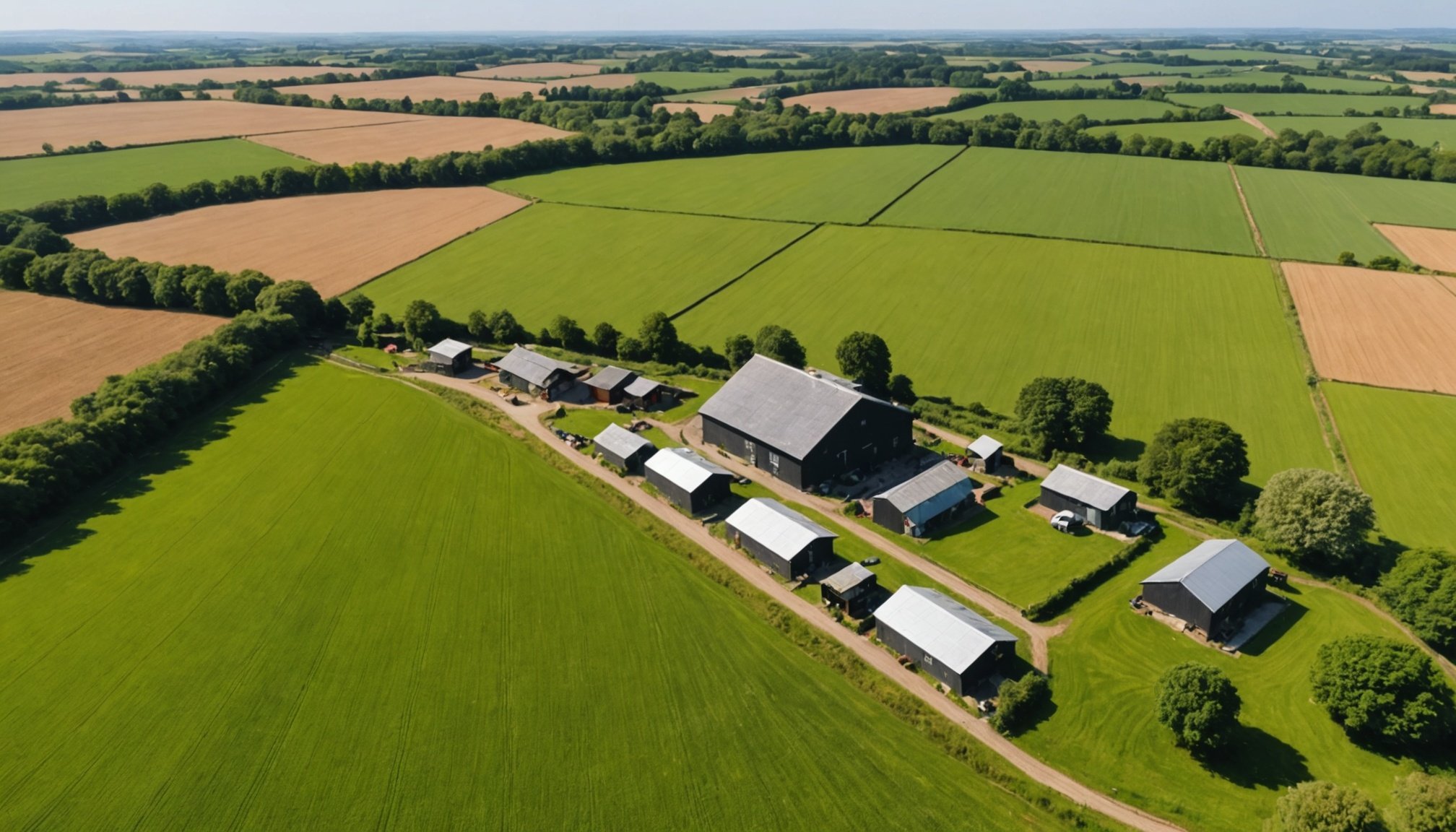Overview of AI in Rural Communities
Artificial Intelligence (AI) is transforming various sectors across the globe, including rural areas. AI solutions in these settings cover a wide scope, ranging from agricultural innovations to remote healthcare services. The integration of AI in the rural context helps to address unique challenges by enhancing productivity, improving quality of life, and fostering economic growth.
In the UK countryside, the technology adoption process is evolving, albeit at a slower pace compared to urban areas. Various sectors are beginning to embrace AI, albeit with some hesitation. This trend reflects a shift in traditional methods towards more efficient, AI-driven practices. Adoption extends beyond agriculture, encompassing healthcare, local governance, and education.
Also read : Exploring the crucial impact of ethics in shaping ai technology advancements
Prior to AI implementation, rural communities encountered several challenges, such as limited access to advanced technology, slower internet speeds, and fewer healthcare facilities. These communities often faced barriers in adopting new technologies due to the digital divide and economic constraints. The introduction of AI aims to mitigate these issues by providing solutions tailored to the living conditions and needs of rural residents, ultimately fostering a more connected and efficient environment.
Benefits of AI Solutions in Rural Life
The advantages of AI technologies in rural settings are increasingly evident as they transform various aspects of daily life. AI applications have revolutionised agricultural practices, enhancing efficiency and crop yields. For instance, AI-driven precision agriculture employs sensors and drones to monitor fields, allowing farmers to make informed decisions about irrigation and fertilisation based on real-time data. This not only boosts productivity but also ensures sustainable use of resources.
Also to discover : Top data management strategies for expanding tech startups: best practices unveiled
In healthcare, AI significantly improves delivery and access in remote areas. Telemedicine has bridged the gap for rural patients with limited access to healthcare facilities, providing virtual consultations and remote monitoring. AI algorithms assist in diagnosing and managing chronic conditions, thus improving patient outcomes and reducing travel needs.
Moreover, AI generates economic opportunities in rural communities. It enables automation, leading to new job opportunities in technology maintenance and data management. AI-driven initiatives have spurred innovation and entrepreneurship, fostering economic growth beyond traditional agriculture.
Overall, AI enhances the rural quality of life by facilitating access to essential services, promoting environmental sustainability, and stimulating local economies. The positive impact is evident as rural regions embrace these transformative technologies, ushering in new possibilities and improved standards of living.
Case Studies of AI Implementation
The implementation of AI in rural areas presents success stories that highlight innovation and tangible benefits. In the realm of smart farming solutions, various AI tools have been embraced to revolutionize agriculture. Technologies such as machine learning algorithms, predictive analytics, and automated machinery have enabled farmers to achieve higher crop yields. For instance, deploying AI-powered drones that monitor crop health in real-time has led to significant improvements in agricultural output through precise and timely interventions.
Telemedicine Technologies
The introduction of telehealth solutions has vastly improved healthcare access in remote communities. AI systems assist in diagnosing patients and managing treatment plans, ultimately enhancing patient outcomes. One notable case study showcases a rural clinic where AI algorithms efficiently analysed medical data, reducing misdiagnosis and minimizing the need for travel. Patients now enjoy increased access to quality healthcare without geographical constraints.
AI-Powered Community Engagement
AI also strengthens rural communities by boosting community engagement. Platforms such as digital forums or AI-driven apps facilitate local governance and decision-making, resulting in broader participation in civic activities. For example, implementing a civic engagement app in a small village witnessed increased voter turnout and more active involvement in local governance, empowering residents and fostering a more cohesive community.
Challenges and Considerations of AI in Rural Settings
Implementing AI in rural areas brings its own set of challenges, particularly in the realm of technology integration. One of the significant hurdles is the digital divide, which manifest as limited internet access and infrastructure deficits in rural communities. The lack of connectivity hampers the effective deployment of AI technologies, thus limiting their potential benefits.
Moreover, there are ongoing concerns about data privacy and security when utilising AI systems. Rural residents may be hesitant to adopt these technologies due to fears of data misuse or breaches, necessitating robust data protection measures and transparent policies to build trust.
Resistance to change is another barrier that affects the adoption of AI in these communities. A cultural attachment to traditional practices fosters scepticism towards new technology, leading to reluctance in embracing AI-driven solutions. Efforts to address this resistance require comprehensive community engagement and education on the benefits of AI technologies.
Addressing these issues is paramount for successful AI integration in rural areas. Bridging the digital divide, ensuring data security, and overcoming cultural barriers through dedicated support structures can pave the way for a smoother implementation of AI solutions, positively impacting rural life.
Expert Opinions and Future Trends
In the evolving landscape of AI, expert insights suggest a transformative impact on rural communities. Industry specialists predict that the future of rural AI will witness more tailored applications, addressing specific local needs. These innovations include enhancements in agriculture, healthcare, and local governance, presenting new opportunities for growth and connectivity.
Industry leaders forecast a shift in AI systems that can autonomously adapt to the specific environments of rural areas, further breaking the existing digital divide. This evolution in technology may lead to seamless integration with minimal infrastructure requirements, expanding the reach and benefits of AI solutions.
However, experts also highlight potential regulatory impacts on AI adoption. As AI systems become more prevalent, regulatory frameworks will evolve to address data security, privacy, and ethical use. Balancing innovation with regulation is crucial for sustainable growth and trust-building among rural residents.
Looking ahead, opportunities for innovative solutions are vast. Future trends include developments in AI-powered energy systems and automated agricultural machinery, promising to reshape the rural economy. By fostering community involvement and prioritising local considerations, AI can play a pivotal role in enhancing rural life. The collaboration between policymakers, technologists, and rural stakeholders will be key in harnessing AI’s full potential for these communities.
Conclusion: A Balanced Perspective on AI in Rural Life
As we navigate the transformative AI landscape, especially in rural locales, a balanced perspective considering the pros and cons is imperative. AI ethics play a vital role in evaluating the impact of technology, ensuring the advancement benefits all layers of rural society. While AI introduction offers profound improvements, such as enhanced efficiency and access to essential services, these benefits must be weighed against existing AI challenges.
AI adoption in rural settings requires careful consideration of potential regulatory impacts and efforts to ensure ethical implementation. An inclusive dialogue involving stakeholders like technologists, policymakers, and rural residents is crucial. By emphasising transparency and AI ethics, communities can foster trust and support around AI developments.
Recommendations for stakeholders focus on engaging community voices, which enhances understanding and acceptance of rural technology. An ongoing conversation surrounding rural technology balance, regulations, and ethical use is essential in ensuring the advantageous deployment of AI. Prioritising these discussions can pave the way for sustainable growth, ultimately enriching rural communities.
In conclusion, strategically addressing these challenges while nurturing innovation is the key to unlocking AI’s full potential, leading toward a future where rural technology and traditional practices coexist in harmony.




